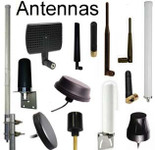Antennas, Antenna Cables, Wireless Products: Technical Articles
Frequency Bands
There are different Frequency Bands such as LTE stands for Long Term Evolution; GSM which stands for Global Systems for Global Communications e; ISM (Industrial, Scientific, and Medical). Frequency bands and their applications are central to the development of current and future communication technologies.
LTE 5G 4G 3G GSM Multi-Band Cellular Antennas
Antennas | Frequency Bands
RFID Wireless Technologies, Frequencies and Applications in IoT
IoT - Internet of Things | RFID | Frequency Bands
5GHz Wireless Frequency: Properties, Applications & Comparison to 2.4GHz WiFi
Frequency Bands
LoRa: Long Range Wireless for Internet of Things (IOT): Frequency Bands, Antennas
IoT - Internet of Things | Frequency Bands
C-V2X Networking: Cellular Vehicle to Everything: Antennas & Accessories
Antennas | IoT - Internet of Things | Frequency Bands
5G, 4G & 3G Standards: LTE, GSM CDMA, ISM, WCDMA, HSPA
Frequency Bands
IoT Wireless Protocol Selection and Frequency Band Characteristics
IoT - Internet of Things | Frequency Bands
WiFi Network Standards Compared: 802.11ax Wi-Fi 6E, 802.11ac
WiFi 802.11 Standards | Frequency Bands
NB-IoT Frequency Bands, Applications - NarrowBand Wireless
IoT - Internet of Things | Frequency Bands
LTE & GSM Bands: Frequency Allocations 4G & 3G
LTE 4G & 5G | Frequency Bands







